You might have done a lot of spring cleaning by now but it’s time to do the same with your website as well. Periodically you should find out how to correctly assess backlink quality for your website. You can have backlinks from numerous sources, and it’s only right to analyze them from time to time because some of them might not be as natural as they were a few years ago. If your domain age is old, you’ve inevitably gathered links that are not quite qualitative. As Matt Cutts, the former head of the web spam team at Google said, “link building is sweat and creativity” and you need to make it as naturally as possible. The process of assessing your backlinks needs to be fully planned, so you won’t risk missing their value and quality. And this is mandatory.
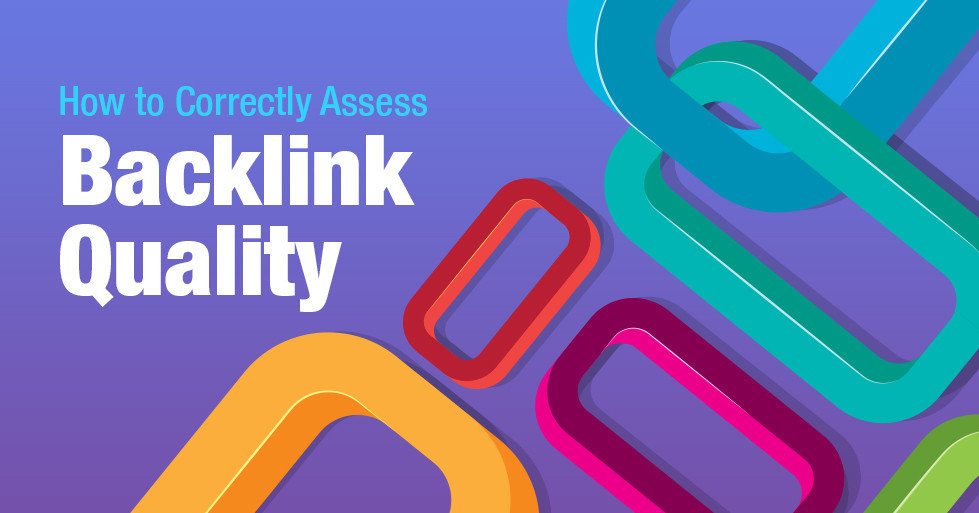
As you might not believe me yet, let me give you a real example. A few days ago, a friend of mine imported a list of links in cognitiveSEO tool to do a backlink checker. The sad part was that many of those links had no anchor text. That happened because most of his links were behind images without alt description or blank spaces. The big problem was that most of them were placed on old websites, pages with 404 error messages, websites that no longer exist and other bad examples. At a closer look, we could see how most of those links lowered the quality of its link profile. Because of those spammy looking links, his website was under a Google penalty risk. And nobody wants that for his own website. If that doesn’t make a person assess his backlink quality, I don’t know what else would.
How To Do a Backlink Quality Assessment?
By now, you might be asking yourself how to create quality backlinks for my website? The truth is that there is no easy way of doing this although some great tips for link building might come in handy. Yet, the purpose of this article is trying to give you some tips on how to do a backlink quality assessment. You might already know what is a backlink profile and some of you might be even using one of the best backlink checkers out there. But what we are going to extend in the next lines are some great tips on how to do a backlink quality assessment:
- Identify as Many Referring Domains as Possible Using Various Backlinks Data Sources
- Check Domain Authority for Your Linking Root Domains
- Verify If You Have Optimized Anchor Texts
- Analyze the Naturalness of the Linking Page Through an In-Depth Backlink Analysis
- Detect the Social Share Magnitude of Your Backlinks
When To Do a Backlink Quality Assessment?
There’s no right time to do a backlink quality assessment but rather a necessity. It’s not a one-time thing, it’s a long process, and it’s up to you how you plan it.
The important thing is that you have to check the quality of the links after a period of time you did some changes or in real time. If you have a small website, is it easier to manually review the SEO data, but if you have a bigger site, it is harder to verify it. That’s why we’re saving you some time by showing the next 5 tips on how to correctly assess the backlink quality for your website.
1. Identify as Many Referring Domains as Possible Using Various Backlinks Data Sources
Having a large site means having numerous backlinks (in theory, at least). Let’s be positive and say that happens in reality, also. Identifying as many linking roots domains is a must, a tip you can’t avoid. Earning a few links from different referring domains will boost your ranking in search results more than earning many links from the same domain. Not to mention, the higher the number of backlinks (from more linking root domains), the higher the chance to improve your rankings.
You can use various backlink tools to get a more comprehensive link audit. Combining different search engine optimization tools can be the best choice if you have had a site for a long time and it has received a large number of backlinks over the time.
If you’re faithful to a single SEO backlink checker tool, make sure it provides you all the data you need, and that you can import all the data you already have from other sources.
For example, if you use the cognitiveSEO tool, you can see your analysis for your entire profile or only a specific number of backlinks.
For a natural profile with qualitative backlinks make sure you have unique backlinks from each referring domain. Keep a clean profile by removing (and getting the most out of) referring domains that send you a status code 404 (Not Found) or domains that don’t have indexed pages. You can also use this technique to verify your external links so you won’t associate your site with bad domains. Especially, if you did link exchanges and other similar spammy tactics. It is also a good practice to detect negative SEO attacks or other black hat SEO techniques against your website.
If you look for a free tool, use Site Explorer. It is easy to use and it can offer a few results using the free subscription. Below you can see a screenshot with a list of backlinks from the tool:
You can click on each to analyze it individually and see if it’s a quality backlink and/or a quality website.
If your business is registered with Google Search Console (Google Webmaster), you can use it to do a backlink audit. The sad part is you can’t see all the spicy details and information that cognitiveSEO tool gives to you. Below you can see a screenshot from the Webmaster panel where you can find the links to your website.
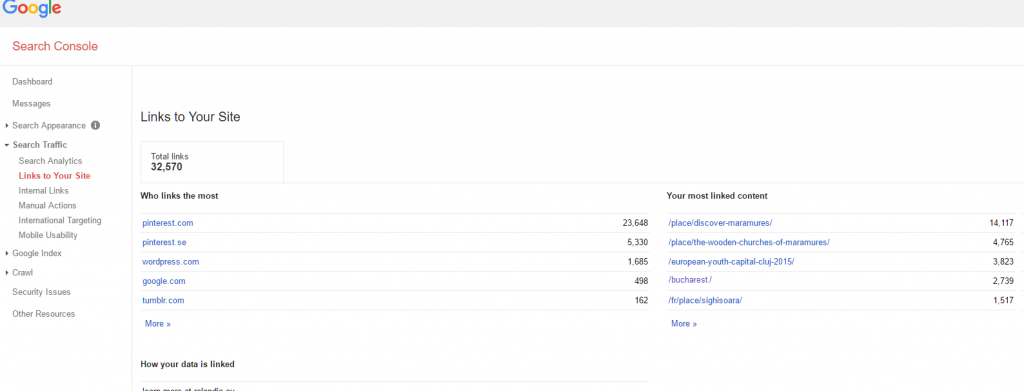
Another tool for checking backlinks you could use is Bing Webmaster tool. You can see your backlinks through a longer procedure. Log into your account and go to the Reports and Data tab and then to the Inbound Links. Below you can see a screenshot from the tool:
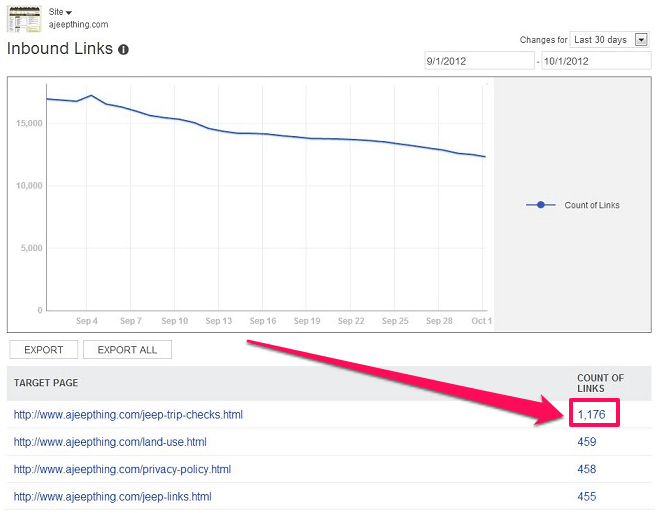
Source: bing.com
Click on the number of links, and then a new window with the backlinks will pop-up.
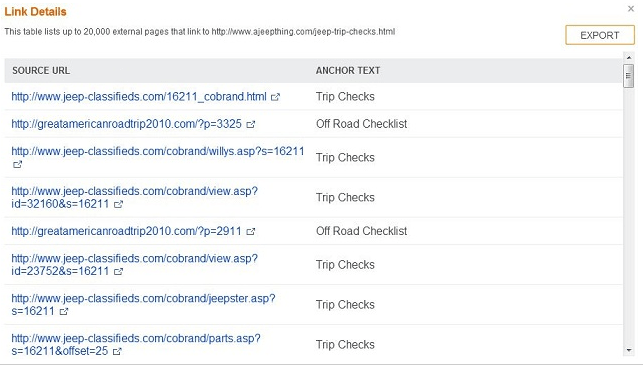
Source: bing.com
2. Check Domain Authority for Your Linking Root Domains
Doing a domain authority check is a must for a qualitative backlink profile.
The higher the domain authority (DA), the better it is because you are linked with such types of domains. If you have a large website, it is important to have a natural distribution of domains with high influence and no influence. That means it is OK to have a smaller number of domains that are highly authoritative than domains that have no influence because it is similar to what domains are on the internet: there are more domains with no influence than with a high influence. The situation can vary if you have a smaller website with a smaller number of backlinks. On the long run, both PA and DA are important; the page authority (PA) where the link is placed.
If you’re already a cognitiveSEO user, you can have a full picture of your domains authority by checking the Domain Influence chart. You can see an example below:
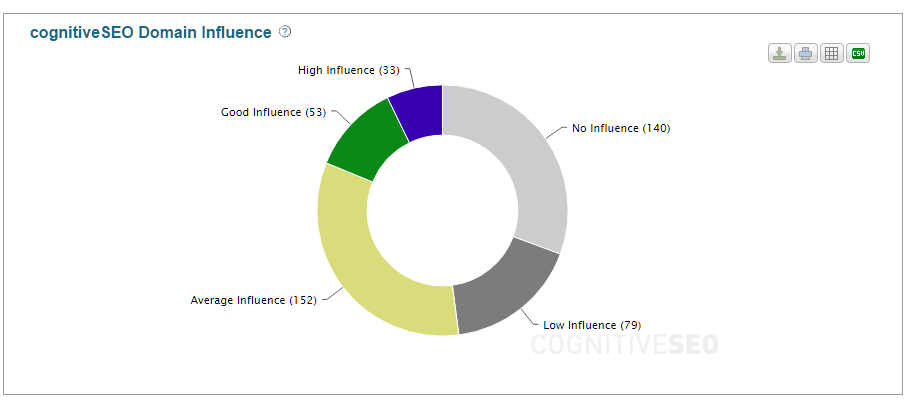
Besides that, you can also have a look at the Link Influence, which gives you an overall idea about the authority of a linking page. Although page authority is something you should check, the domain authority has a higher importance.
A light example is cognitiveSEO Site Explorer where you can run a short SEO analysis to check the influence of your backlinks. It is an easy to use and accurate backlinks quality checker.
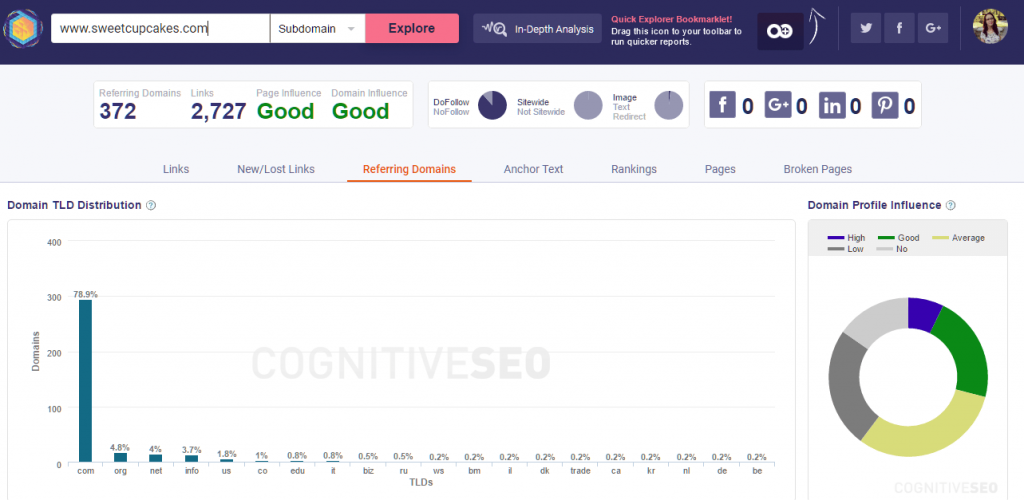
Source: https://explorer.cognitiveseo.com/?u=www.sweetcupcakes.com&m=U*#section/2
3. Verify If You Have Optimized Anchor Texts
Another tip on how to correctly assess backlink quality for your website is to verify your anchor texts.
You should focus on two types of anchor text: commercial and brand.
For a better understanding of these anchors, let me give you an example: Nike (brand anchor text), running shoes (commercial anchor text).
The Site Explorer gives you the opportunity to check your anchor texts. For example, if you take a look at the screenshot below you can see that the brand names are “sweet cupcakes”, “www.sweetcupcakes.com”, “sweetcupcakes.com” and other similar variations. An example of commercial anchor text is “sweet bakery”. There are also some miscellaneous ones that don’t fall in one of the previous categories. For example, in the next picture “website”, “source”, “click here”, “credits” and so on are all miscellaneous.
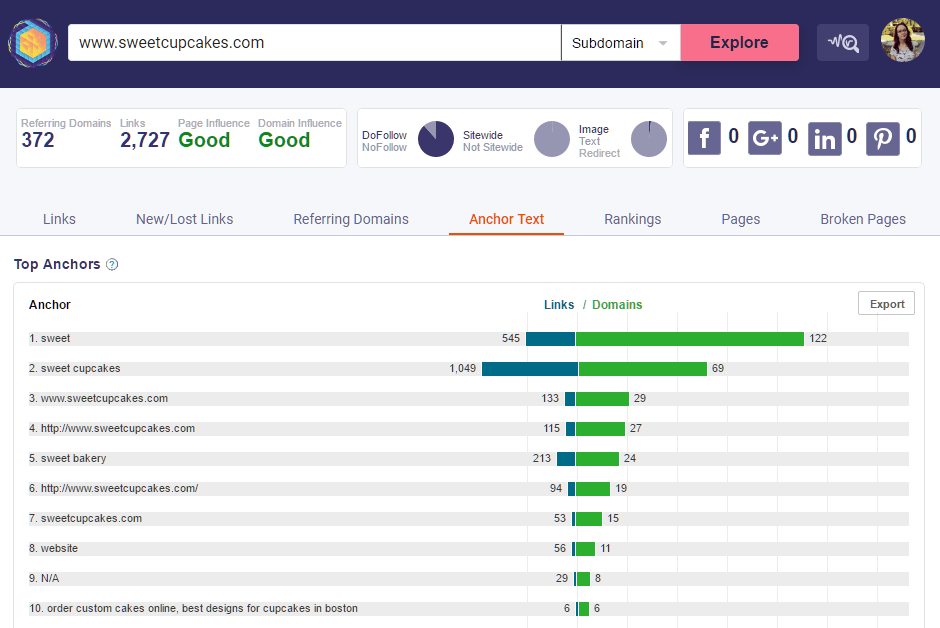
Source: https://explorer.cognitiveseo.com/?u=www.sweetcupcakes.com&m=U*#section/3
Those that appear as N/A means they have no anchor text. For them, you need to make a further investigation for assessing the quality of those links and see how they appear on the page. A good way to start is using the cognitiveSEO tools that offers you the possibility to analyze each anchor text and mark each and every one of them as commercial, brand or miscellaneous.
This is an example of anchor texts that were classified:
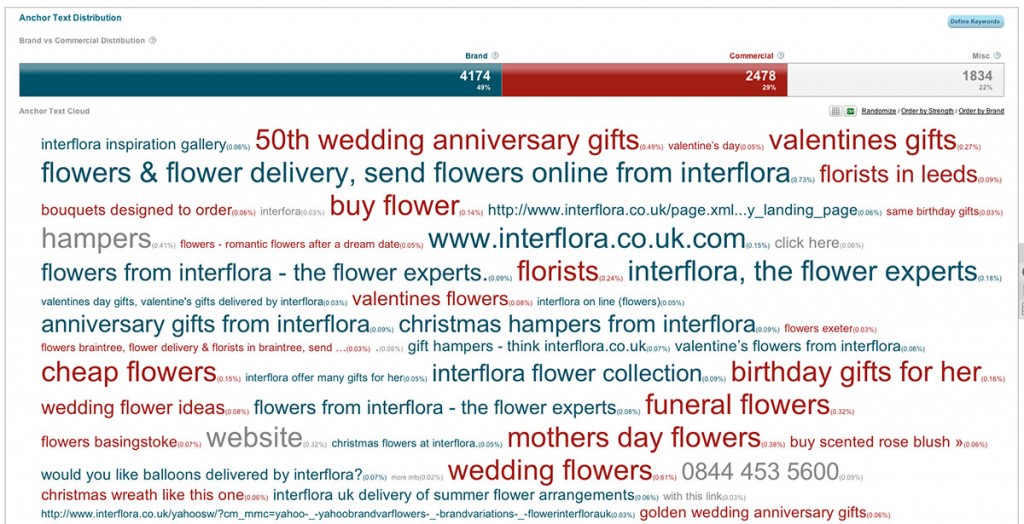
There is another type of anchor text: the ones you shouldn’t have. To get a sense of what I’m talking about, take a look at the next example:
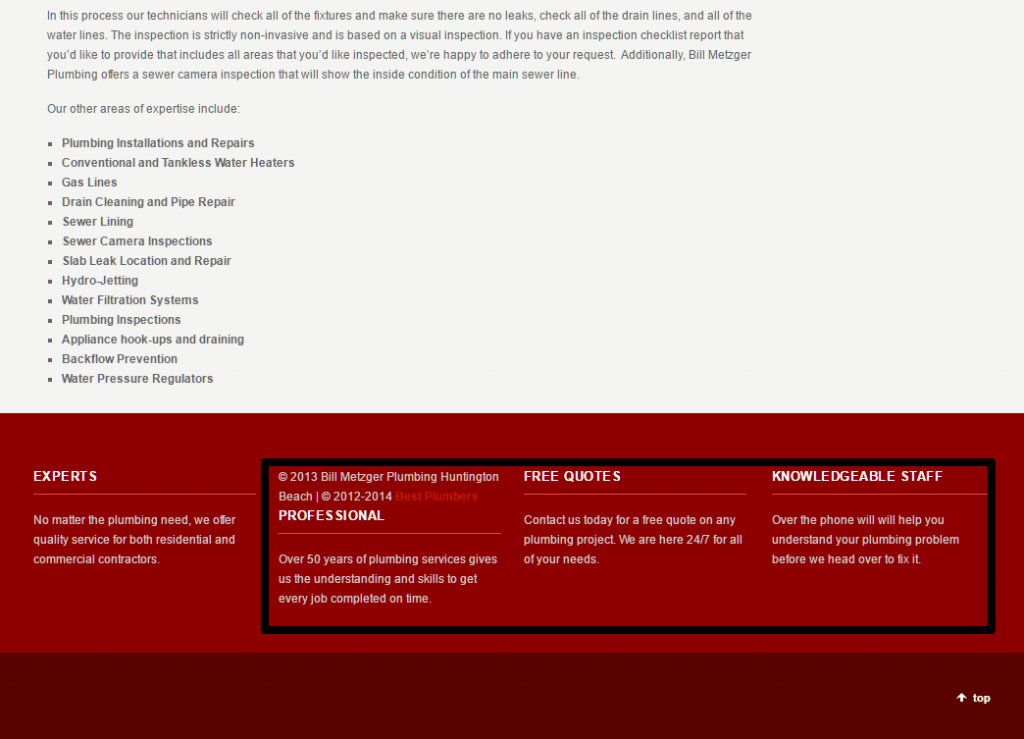
Source: http://billmetzgerplumbinghuntingtonbeach.com/plumbing-inspections-in-huntington-beach/
All the text from the dark square is a single anchor text. This is an example of bad anchor text “best plumber professionals over 50 years of plumbing services gives us the understanding and skills to get every job completed on time. free quotes. contact us today for a free quote on any plumbing project. we are here 24/7 for all of your needs. knowledgeable staff over the phone will help you understand your plumbing problem before we head over to fix it.”
If you follow the previous simple steps you are closer to having a better link profile with high-quality backlinks. To make this assessment process easier, you should focus your content marketing strategy into creating good, quality content. This way you could improve the method of obtaining anchor texts naturally. Regarding the internal links on your own website you can make improvements, so take in mind the idea of optimizing those links, too. The anchor text of an internal link is also important.
4. Analyze the Naturalness of the Linking Page Through an In-Depth Backlink Analysis
Another important aspect in the link quality assessment is to make an on-page analysis for each backlink. You need to review each page that is linking to your website using the next guidelines/metrics:
- how natural does that link appear on the page: OK, Suspect or Unnatural link;
- where is the position of a link: above the fold, body or footer;
- whether it is a text, image or redirect link;
- link status: live or lost;
- what type of page is it on: blog post, blog comment, blogroll, forum thread, author signature, video widget, forum signature, banner, article, copyright paragraph, short paragraph of text, group of links;
- link positioned in: content or group of links;
- whether it is a deep or a homepage link;
- the HTTPs status of the page;
It would be good to know that cognitiveSEO tool offers you information about all the metrics and guidelines I’ve mentioned above.
A bad backlink means it is placed on a list of links, the page is full of “viagra ads” or something similar and many other dizzy and popping messages/ads. These types of links have a high spam score and can harm your site’s rankings. If these type of bad links damaged your website you would see a ranking drop. Let’s hope that didn’t happen. That is why you need to check your backlinks and use the disavow tool to avoid harming your website.
For example, does the links that appear in the next picture seem natural to you?
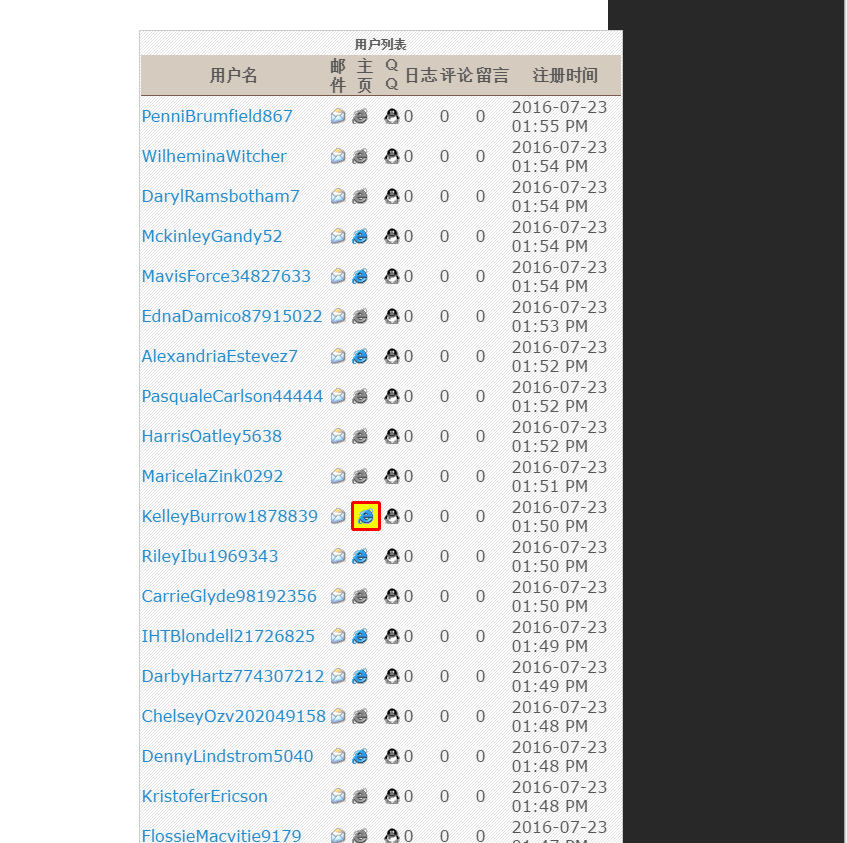
Source: 8393937.com/member.asp?page=990
Bear in mind that the each link is placed under the Internet Explorer icon. That’s a bit shady in my opinion. Nothing natural there. That type of links could harm your site’s ranking.
cognitiveSEO has a unique Unnatural link Detection feature you can use to make an in-depth analysis for each backlink you have and verify if you have quality websites linking back to you. After you have made a backlinks audit, you can see all the unnatural links and find out the reasons, either if it has low influence, thin content, suspect anchor text or other unnatural link issues. You could also export your SEO data into reports and use it however you want.
A link can lose its link juice if it is placed in a list. The more links on a page, the smaller the chance a link gets clicked. A list of outbound links can lower the power of each individual link from that page.
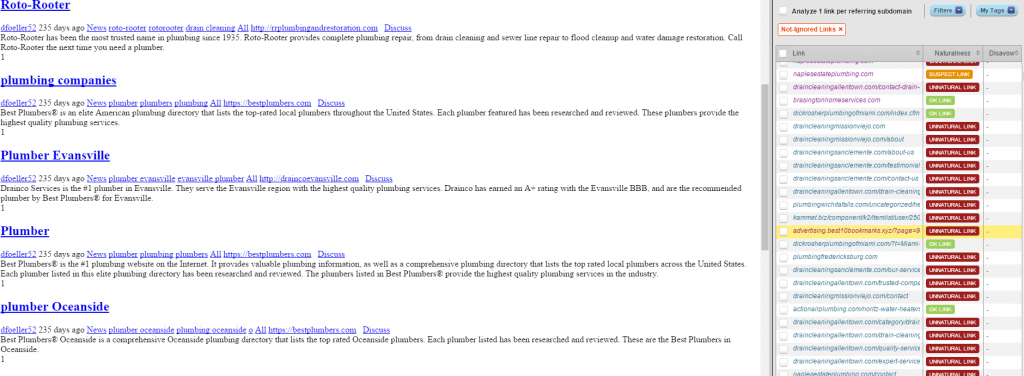
Another thing you should check is the HTTP status code. If you have backlinks on broken pages, that can also diminish the link juice. cognitiveSEO Inbound Link Analysis tool can save you in this situation, too.
5. Detect the Social Share Magnitude of Your Backlinks
The social component can’t miss from the guideline on how to correctly assess backlink quality for your website.
Analyze the quality of your backlinks by following the path of social sharing backward. That is check if the page where you have backlinks has shares in social media, engagement and an overall image in the public area. Social share and the engagement rate are two of the most important social metrics. The users who appreciate and share that page could become viewers of your site and they represent valuable prospects. Those links are worth keeping.
Social shares mean driving traffic to your website. Social shares to pages where you have links represent qualitative traffic to your website and can increase the conversion rate.
According to Shareaholic, social media drives 31% of all referral traffic. This makes it the number 1 driver of all website referral traffic. If you take a look at the next graph, you can see that social has increased:
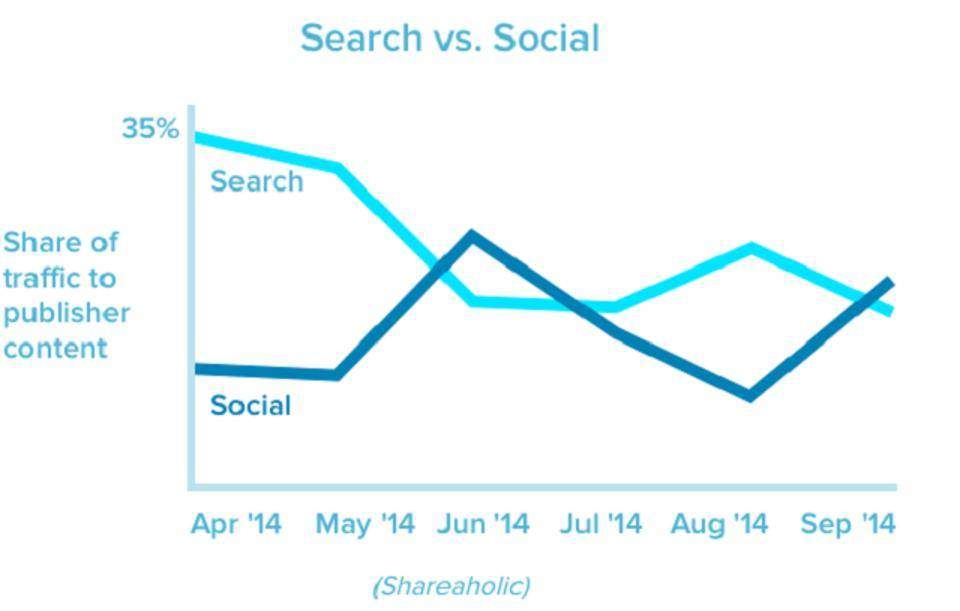
Source: forbes.com
Conclusion
For a comprehensive backlink analysis i recommend you considering the SEO tips mentioned above: starting by identifying as many linking domains as possible using various backlinks data sources, checking domain authority, optimize your anchor texts, verify each page where you have backlinks to look natural, and follow the social share traces. You could also see how many dofollow links you have in the total amount of backlinks. It is good to have a bigger percentage of nofollow links than dofollow links because that is how a natural links profile looks like. Make sure to include this in your online marketing strategy.
Go big or go home. Never go for shortcuts using link schemes, or other shady link building techniques that will do more harm than good (even if there are a lot of link building tools that will offer you unremitting link building opportunities). Your link building strategy shouldn’t stop after your links go live, so you won’t risk getting your link removed and having lost links.
You’re not alone in this, you could use the SEO tools I mentioned: the cognitiveSEO, Site explorer, Google Search Console and Bing Webmaster tools to correctly assess the quality of your backlink profile and to receive useful information for further investigations. You can use these backlink analysis tools to assess your backlinks, but also to build backlinks by searching for opportunities in your competitors’ backlinks list. You can even access each competitor’s link profile and boost your own by using a Competitive Link Analysis.

 Site Explorer
Site Explorer Keyword tool
Keyword tool Google Algorithm Changes
Google Algorithm Changes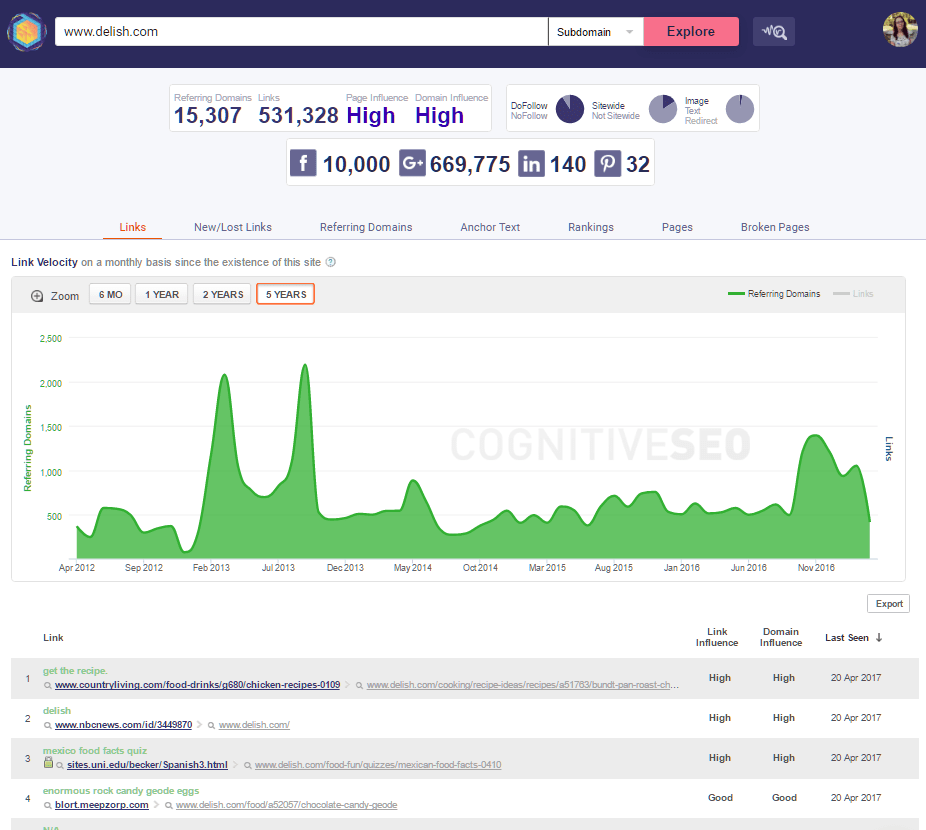


Simply perfect article it is very complicated with actual google algorithm
Wow, what a comprehensive article. I cannot wait to try some of these tools. Thanks for this information.
Thank you, Steven! Good luck implementing them.
Nice article, I believe a lot of backlinks and their quality is essential for good SEO performance. I put it equally with site content.
Nice list of items to check when analyzing the naturalness of a linking page. Thanks for the article.
Hello Andreea
What a Informative Article it is!For a Good SEO performer have to Follow your 5 tips.I appreciate your good effort.
Thank you Andreea and also thank to Cognitive SEO for publish this kind of useful Post.
~Mamun Mahdeeb
Hi, Mamun! Glad to hear it helps. Good luck on the implementation.
Nice, thank you for sharing a comprehensive article.
About anchor text distribution . How can i know it is correct (Brand, Keyword , Misc….)?
Hi!
In general, all the anchor texts that include the brand name are considered by Google as brand. For example, “link building tool from cognitiveSEO” I would classify it as a brand anchor text. The anchor texts that don’t include the brand name are commercial type, and those who don’t fall in any category are misc (ex “click here”), just as I mentioned in the article above.
It really depends on a lot of variables such as the website is on, the purpose it used for. You have to check each anchor text to see how it appears on each website.
This article is just about what i’m looking for! Getting good quality backlink could take some time, but if we know the effective way to do it, it would be worth it.
I like your article about creating back links. Its really valuable in blogging field. Whenever i will use to create back links, definitely i will follow your tech tics. Is really forum posting good method to generate back links?
Very nice article. These all are very useful tips to generate backlinks for event blog.i am looking for this backlinks technique for one of my event blog. Keep sharing
Thank you very much for this article a very good job especially the tools you gave us